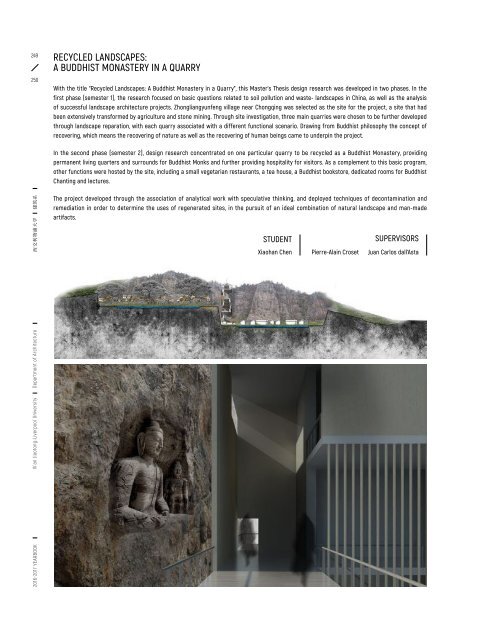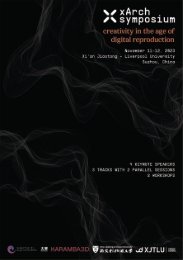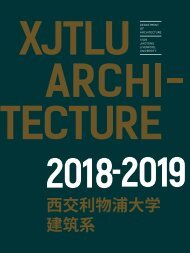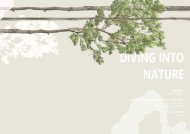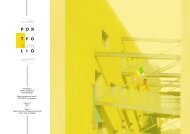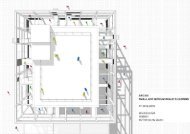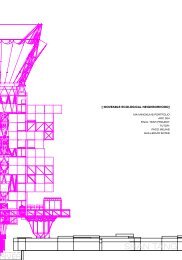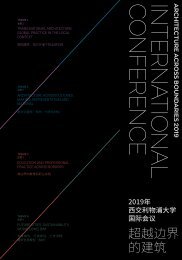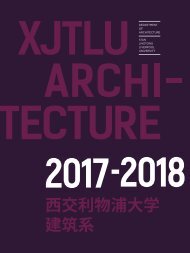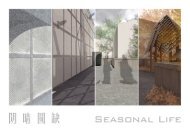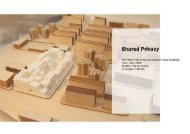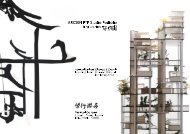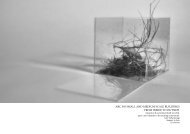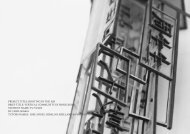YEARBOOK 2016 - 2017 | XJTLU DEPARTMENT OF ARCHITECTURE
The fourth edition of the yearbook of the Department of Architecture at Xi'an Jiaotong-Liverpool University presents student works created during the academic year 2016 - 2017. The yearbook exemplifies the new model for Chinese architectural education for which the department was commended by the Royal Institute of British Architects (RIBA). It is thus also a showcase of the creative culture that has guided our students in taking first steps to successful international careers as responsible and creative architectural designers. XJTLU offers RIBA Part 1, 2 and 3.
The fourth edition of the yearbook of the Department of Architecture at Xi'an Jiaotong-Liverpool University presents student works created during the academic year 2016 - 2017. The yearbook exemplifies the new model for Chinese architectural education for which the department was commended by the Royal Institute of British Architects (RIBA). It is thus also a showcase of the creative culture that has guided our students in taking first steps to successful international careers as responsible and creative architectural designers. XJTLU offers RIBA Part 1, 2 and 3.
Create successful ePaper yourself
Turn your PDF publications into a flip-book with our unique Google optimized e-Paper software.
249<br />
250<br />
RECYCLED LANDSCAPES:<br />
A BUDDHIST MONASTERY IN A QUARRY<br />
With the title “Recycled Landscapes: A Buddhist Monastery in a Quarry”, this Master’s Thesis design research was developed in two phases. In the<br />
first phase (semester 1), the research focused on basic questions related to soil pollution and waste- landscapes in China, as well as the analysis<br />
of successful landscape architecture projects. Zhongliangyunfeng village near Chongqing was selected as the site for the project, a site that had<br />
been extensively transformed by agriculture and stone mining. Through site investigation, three main quarries were chosen to be further developed<br />
through landscape reparation, with each quarry associated with a different functional scenario. Drawing from Buddhist philosophy the concept of<br />
recovering, which means the recovering of nature as well as the recovering of human beings came to underpin the project.<br />
In the second phase (semester 2), design research concentrated on one particular quarry to be recycled as a Buddhist Monastery, providing<br />
permanent living quarters and surrounds for Buddhist Monks and further providing hospitality for visitors. As a complement to this basic program,<br />
other functions were hosted by the site, including a small vegetarian restaurants, a tea house, a Buddhist bookstore, dedicated rooms for Buddhist<br />
Chanting and lectures.<br />
<strong>2016</strong>-<strong>2017</strong> <strong>YEARBOOK</strong> Xi’an Jiaotong-Liverpool University Department of Architecture 西 交 利 物 浦 大 学 建 筑 系<br />
The project developed through the association of analytical work with speculative thinking, and deployed techniques of decontamination and<br />
remediation in order to determine the uses of regenerated sites, in the pursuit of an ideal combination of natural landscape and man-made<br />
artifacts.<br />
STUDENT<br />
Xiaohan Chen<br />
Pierre-Alain Croset<br />
SUPERVISORS<br />
Juan Carlos dall’Asta


